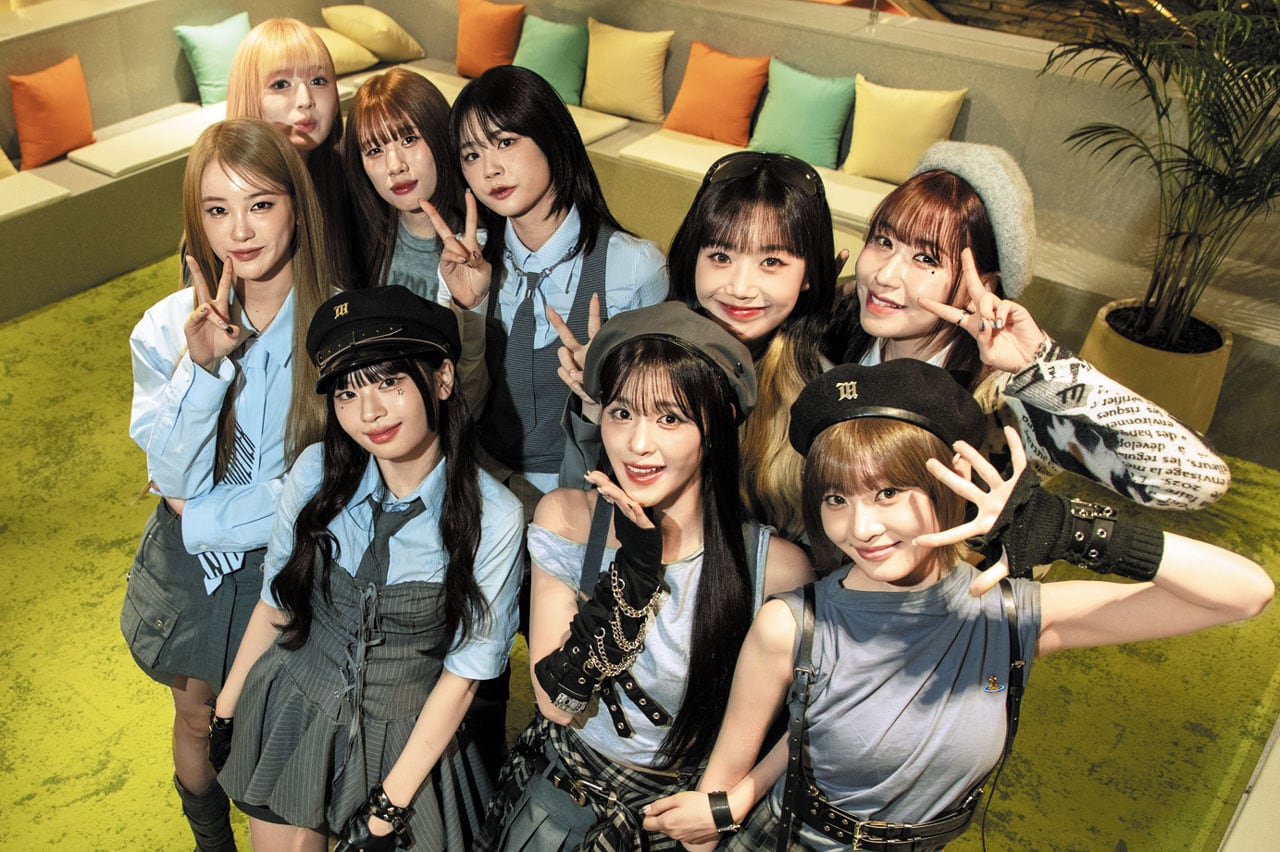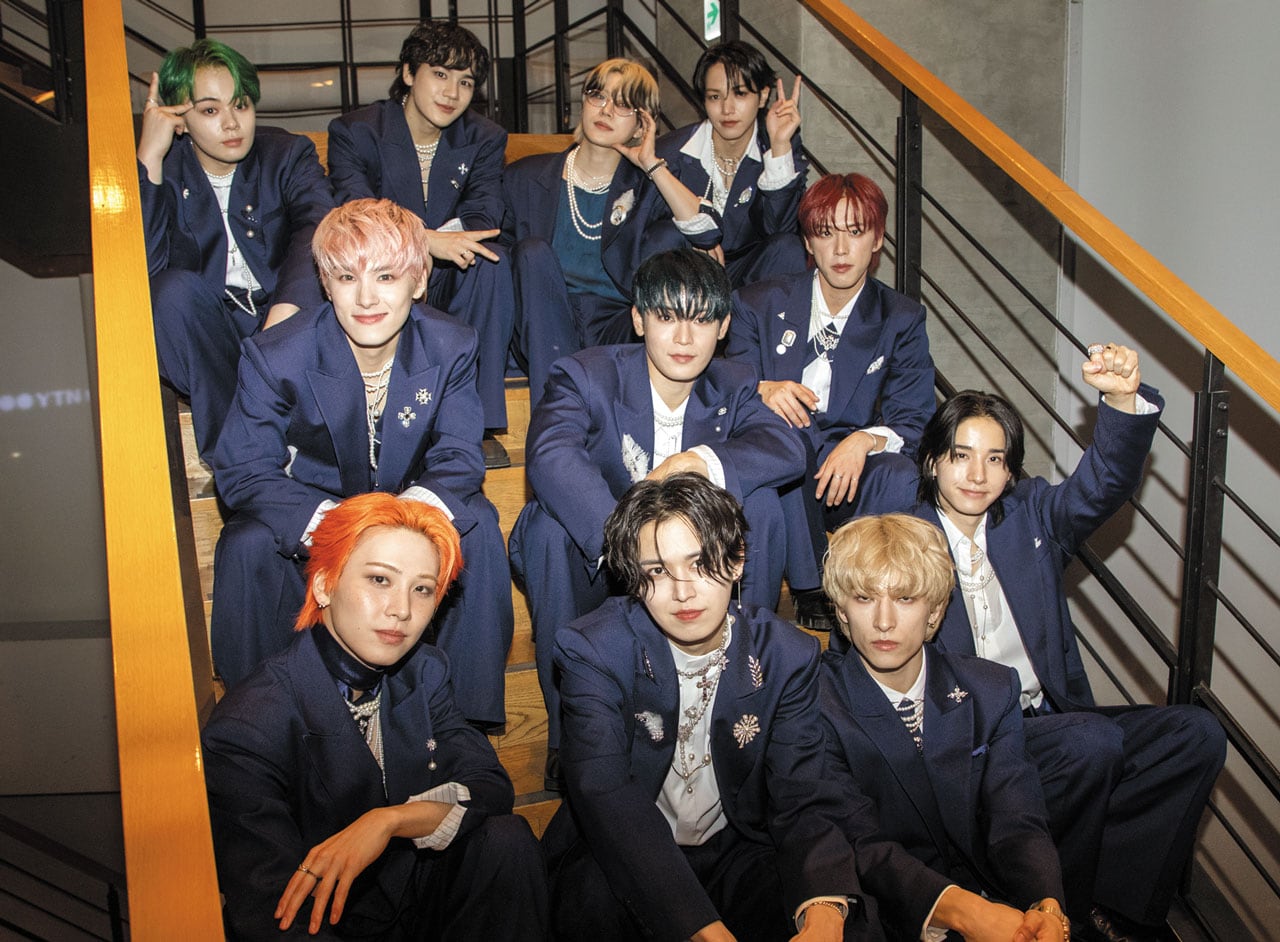- Dapatkan link
- X
- Aplikasi Lainnya

Sho Yonashiro, the 30-year-old leader of Japanese idol group JO1, recently filmed an episode of Mnet’s “M Countdown” at CJ ENM’s headquarters in Seoul. JO1, whose members are all Japanese, was formed through “Produce 101 Japan,” a joint Korean-Japanese audition program. The group is part of a growing wave of localized K-pop groups that follow the K-pop production model but are based in Japan.
Until recently, these groups kept a low profile regarding their Korean connections, concerned about criticism in Japan for focusing too much on overseas activities. But that mindset has started to change. Yonashiro said, “We often study K-pop trends, fashion, and the Korean language together,” and even danced the viral “Han River Cat Challenge” that recently trended on Korean TikTok.
Japanese acts such as JO1, &TEAM, ME:I, and INI have started making frequent appearances on Korean music programs despite not having debuted in Korea. This trend gained prominence following JYP Entertainment’s Japanese girl group NiziU winning an award at a Korean music show for the first time in 2023. As a result, Korean promotional activities have become more common. Some groups, including NCT Wish and NEXZ, have gone so far as to release their debut albums concurrently in both South Korea and Japan.


The Japanese branch of CJ ENM, known as Lapone Entertainment, is responsible for several initiatives. This company oversees JO1, INI, and ME:i, and actively supports their presence in South Korea. Since making its debut in 2020, JO1 has consistently reached number one on Japan’s Oricon charts with each new release. Last year, INI managed to sell over a million copies, placing it among the select group of Japanese acts like Snow Man who have achieved this milestone. Additionally, ME:i won the award for Best New Artist at last year's Japan Record Awards and similarly dominated the Oricon chart.
Even though they have a robust presence domestically and participate in significant Japanese events such as NHK’s "Kōhaku Uta Gassen," these groups consider Korean music shows essential for their expansion strategies. As per CJ ENM producer Jung Yu-jin, these programs serve as a crucial pathway to cultivating an international audience.
Initially, some people worried that K-pop tactics might be transferred abroad with nothing coming back, essentially acting as a blueprint for J-pop. However, this worry has diminished as these Japanese bands embrace Korean training routines and marketing approaches. According to Yonashiro, group members underwent daily rigorous training in South Korea from 7 a.m. to 11 p.m., which isn’t typical in Japan. Consequently, JO1 characterizes their music style as "KJ-pop," merging aspects of both K-pop and J-pop genres.
The establishment of K-pop production techniques in Japan is proving advantageous for the Korean music sector as they foster a fresh cohort of Japanese artists trained in K-pop. Jung commented, "In the initial run of 'Produce 101 Japan,' many participants were rooted in J-pop; however, subsequent seasons saw an increase in trainees groomed through K-pop training systems."
ME:I leader Momona Kasahara, 22, is also a K-pop trainee who began her career in Japan. She debuted at 12 in a J-pop girl group but re-debuted after competing in “Produce 101 Japan The Girls.” While living in a small room near Hongdae, Seoul, she trained at a K-pop academy. “I’ve been a K-pop fan since childhood,” she said. “I chose K-pop because I want to continue performing even ten years from now.”
These idols' experience performing on Korean and Japanese music shows provides valuable insight for entertainment companies in both countries. Jung noted, “Korean and Japanese producers have different standards. Korea prioritizes polished, systematic skills, while Japan values individuality.” Yonashiro pointed out that Japan lacks Korea’s regular broadcast schedule. “In Japan, we usually promote on morning news shows or through occasional specials. Weekly music programs like in Korea are rare.”
The performance culture varies as well. According to Kasahara, "Korean productions focus heavily on the 'finale stance,' which we trained for individually. My initial Korean expression became 'This was ME:I' because we use this after each show. Conversely, in Japan, our custom is just saying 'thanks' before leaving."
Japan has emerged as one of the most receptive markets for K-pop-style acts. Unlike the United States, where major agencies have been slower to launch local K-pop groups, and China, where political issues have blocked efforts, Japan has rapidly integrated the K-pop model. “There were some moves to reduce K-pop’s presence on Japanese year-end shows,” said producer Jung, “but they didn’t have much impact. The label of K-pop no longer carries the same weight it used to.”
Komentar
Posting Komentar